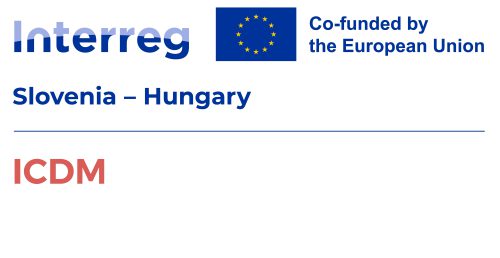Project overview
In the previous programming period, the IronCurtainCycling project put the Slovenian-Hungarian border region on the EuroVelo cycling routes map. The project partners did this based on the best available practices in trail development – the EV13 Iron Curtain Trail has been signposted, missing infrastructure elements have been built, attractions valorising cultural heritage of the Iron Curtain period have been developed, and service providers along the trail have been identified and trained on cycling friendly services. Building on the partnership of the IronCurtainCycling project and their experience, the Innovative Cycling Destination Model (ICDM) project aims to create a new and innovative destination management model, as no national or regional model has been established and operational neither in Slovenia nor in Hungary so far. The joint participatory model will build on cooperation among local service providers, existing tourism coordinator local offices and other key actors managing attractions and providing services. It will allow to manage the cross-border cycling destination in a sustainable way, allowing vital joint activities after project completion.
In parallel with the implementation of the ICC project, the Amazing AoE project (Danube Transnation Programme) which promotes natural and cultural values of the Mura-Drava-Danube Biosphere Reserve (the world’s first UNESCO Biosphere Reserve in 5 countries) has introduced innovative solutions in the field of tourism marketing and destination management.Both trails (Amazing AoE and ICC) connect the border region with long-distance routes and the trans-European network, the Iron Curtain Trail in a north-south direction, the Amazing AoE in an east-west direction. The ICDM project aims to transfer and adapt these new, already tested participative methodology to the broader Slovenian-Hungarian border area, too. The methodology used and proven in the Amazing AoE will be transferred and adapted in the development of a new cross border tourism product, taking into account the specificities, natural and cultural values of the border region with a special emphasis on “Spirituality”.
In response to the common challenges defined in the SI-HU Interreg Programme 2021-27, in order to utilize synergies between these existing initiatives to develop new cross-border tourism offers, to link and coordinate existing ones as well as involve new, less visited rural areas and their stakeholders in cross-border cycle tourism, while at the same time linking the demand that exists in the popular magnets of the area, the Innovative Cycling Destination Model project aims to create a joint, sustainable framework model for cycling tourism in the cross-border area and to develop a new, thematic cycling product that valorises the common cultural and natural heritage and takes into account the needs of target groups of special needs. The model will include important aspects of efficient joint destination management, such as joint branding, quality management, capacity building, maintenance of trails, joint promotion, etc. applying lessons learned and solutions developed so far.
The challenge of accessibility of tourism destinations (including cycling trails) for target groups of special needs has never been tackled in a coherent manner in the Slovenian-Hungarian cross-border area. Reasons for that are the lack of awareness but also the lack of available working certification methodologies. The ICDM project aims to introduce a European certification standard for accessibility into the common destination.
In addition, there is a significant asset of cultural capital (Built and intangible heritage of Vas and Zala county and Podravje and Pomurje region, archaeological sites, Slovenian folklore, Hungarian poets etc.) and landscape values that are not yet exploited by existing tourism offers, especially in less visited areas. The ICDM project aims to create a new thematic cycling product that capitalises on these assets. One theme in which the area is extremely rich and which could be a key topic and basis of content development and branding is Spirituality – including all the cultural heritage related to different religions, archaeological values, traditions, legends, cultural landscapes and artistic values that represent the historical coexistence of nature and man.
Main outputs of the project:
- create a joint, sustainable framework model for cycling tourism and a promotion strategy for the key local and regional actors, tour operators, touristic offices, local communities
- training and mentoring of service providers on story-telling of local experiences, how to integrate it into the services as well as their marketing/digital skills.
- create a new thematic cycling product combined with existing supply elements: beneficiaries are the local community, tourists
- cycling-friendly, green and accessible joint quality standard for local and regional actors
Project achievements and materials
In this section you can find useful materials related to the project.
- File 1
- File 2
Project duration
Project start date:
1.1.2024
Project end date:

